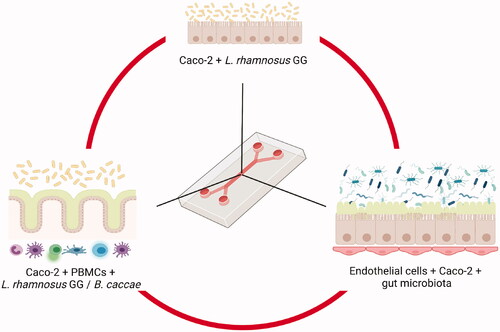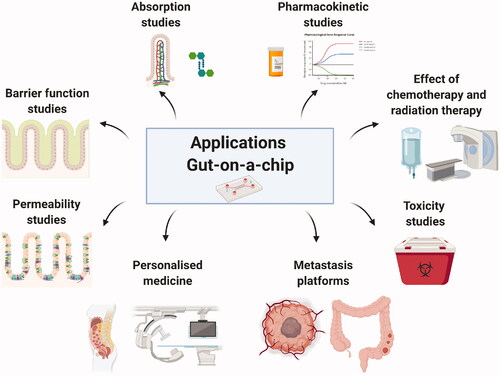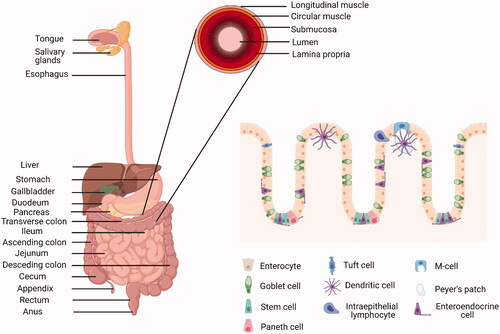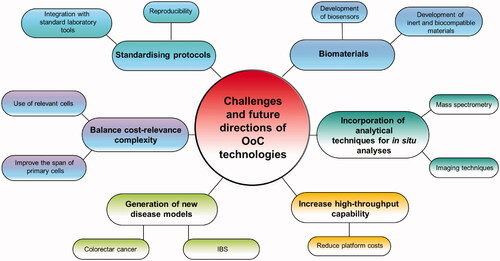Figures & data
Figure 1. Advantages and limitations of the different models for the study of host-microbiota-food interactions. Created with BioRender.com.

Table 1. Some examples of microbial metabolites in fermented foods.
Figure 4. Examples of different complexity levels in gut-on-a-chip systems that use immortalised cells to study the interactions with gut microbiota. The example in the upper position represents the first study that co-cultured L. rhamnosus GG with Caco-2 cells (Kim et al. Citation2012). On the right hand side, another system incorporated Human Peripheral Blood Mononuclear Cells (PBMCs) to further study the gut-immune system interactions, like in the Humix system, that also allowed the growth of anaerobes such as Bacteroides caccae (Eain et al. Citation2017). On the right hand side, a representation of the system generated by Jalili-Firoozinezhad et al, including endothelial cells and a complex gut microbiota from humanised mice (Jalili-Firoozinezhad et al. Citation2019). Created with Biorender.com.




